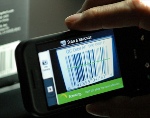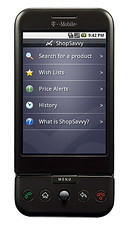
Macbooks
You heard the rumors, now get the details. Apple has just released a major update to the MacBook line, leaving the original white plastic model in the mix but lowering the price to $999; the two new models are priced at $1299 and $1599. You can see a video overview of the new beasties at Apple's site.
The new models feature the same unibody aluminum construction process as the MacBook Pro; video chores are handled by the NVIDIA GeForce 9400M display subsystem with 256 MB of shared video RAM, a dramatic performance boost from the older Intel integrated graphics -- Apple claims 2.5x-6x better 3D performance on gaming tests.
Both new models support up to 2560x1600 pixels on an external display (via the new Mini DisplayPort connector) and sport a native 1280x800 13.3" glossy LED screen. The design of these laptops is so radical, Apple has two full pages of sweet geeky detail posted on apple.com.
Both models include the new all-glass trackpad, built-in iSight, 8x Superdrive and 2 GB of RAM. They are under one inch high (2.41 cm), 12.78 inches (32.5 cm) wide, and they both weigh 4.5 lbs (2.04 kg). Neither MacBook model includes a FireWire port (unlike the big boys, which have a single FireWire 800 port) -- this is a definite drawback for anyone thinking of one as a mobile video workstation.
Lower-end model:
- Price: $1299
- Main Specs: 2.0 GHz Core 2 Duo, 3MB L2 cache, 2GB of RAM expandable to 4 GB, 160GB HD
- Display & Other: 13.3" screen, 8x Superdrive, 2 USB
- BTO: Add RAM (up to 4 GB), up to 320 GB HD or 128 GB SSD
High-end model:
- Price: $1599
- Main Specs: 2.4 GHz Core 2 Duo, 3MB L2 cache, 2GB of RAM expandable to 4 GB, 250GB HD
- Display & Other: 13.3" screen, 8x Superdrive, 2 USB
- BTO: Add RAM (up to 4 GB), up to 320 GB HD or 128 GB SSD
More details on features, graphics, tech specs and environmental compliance are up at Apple's site.
Macbook Pro
Almost eight years ago, Apple introduced the Titanium PowerBook, and with it the company ushered in a wave of industrial laptop design that in many ways, is still unmatched. Although the 2003 and 2006 refreshes to the lineup changed the material (from titanium to aluminum) and processor (from PowerPC to Intel), the basic design has remained essentially the same.
It's time for a change. Last night we got a tip showing off the new design (a design that closely mirrors the leaked Deutsche Telekom images from last month), now we finally have the hardware details. Apple did mention that the rumored "Brick" manufacturing process is, in fact, what they are using for the new notebooks.

15" MacBook Pro
Price: $1999
Specs:
- 15.4" LED-backlit display
- 2.4 Ghz Intel Core 2 Duo (with 3MBs of L2 cache)
- 2GBs of DDR3 RAM
- NVIDIA GeForce 9400M + 9600M GT with 256MB
- 250 GB hard drive
- Slot-loading Super Drive
15" MacBook Pro
Price: $2400
Specs:
- 15.4" LED-backlit display
- 2.53 Ghz Intel Core 2 Duo (with 6MBs of L2 cache)
- 4GBs of DDR3 RAM
- NVIDIA GeForce 9400M + 9600M GT with 512MB
- 320 GB hard drive
- Slot-loading Super Drive
Macbook Air

Sweet! Even the MacBook Air got a boost, 9 months after the first release in January. As with the rest of the MacBook line, the new Air features the Nvidia GeForce 9400M GPU and the Mini Display Port. The MacBook Air now supports DVI, dual-link DVI, and VGA video output. It will connect to the new Apple LED Cinema Display and can drive other displays up to 30 inches in size. Unlike many of the other MacBooks, it doesn't have the new glass trackpad.
The big deal from today's announcement? The top level MacBook Air now has a slightly faster CPU, faster memory, and a 128 GB solid state drive. The details are below, more to follow as we get a chance to play with one.
Entry level MacBook Air
Price: $1,799
Specs:13.3" LED-backlit display, Nvidia GeForce 9400M GPU, 1.6 GHz Intel Core 2 Duo / 6 MB L2 Cache, 2 GB 1066 MHz DDR3 Memory, 120 GB SATA hard drive.
Form Factor: Same as existing model
Top level MacBook Air
Price: $2,499
Specs:13.3" LED-backlit display, Nvidia GeForce 9400M GPU, 1.86 GHz Intel Core 2 Duo / 6 MB L2 Cache, 2 GB 1066 MHz DDR3 Memory, 128 GB solid state drive.
Form Factor: Same as existing model

 With the rise of app-laden smartphones like the iPhone and Google's Android OS, now on T-Mobile's G1, many penny-pinching shoppers have downloaded barcode scanning applications onto their mobile devices. These apps allow consumers to compare the prices of merchandise on a store's shelf to competing stores in the area just by taking pictures with their smartphone's camera. The prices are instantly retrieved and displayed on the mobile phone so consumers can know before they buy if they're getting a good deal.
With the rise of app-laden smartphones like the iPhone and Google's Android OS, now on T-Mobile's G1, many penny-pinching shoppers have downloaded barcode scanning applications onto their mobile devices. These apps allow consumers to compare the prices of merchandise on a store's shelf to competing stores in the area just by taking pictures with their smartphone's camera. The prices are instantly retrieved and displayed on the mobile phone so consumers can know before they buy if they're getting a good deal.  Although this is just anecdotal evidence from one customer, it's entirely believable that without concrete store policies in place, you're going to encounter rogue employees here and there who have no idea what you're doing and will ask you to stop.
Although this is just anecdotal evidence from one customer, it's entirely believable that without concrete store policies in place, you're going to encounter rogue employees here and there who have no idea what you're doing and will ask you to stop. 


 In a move that surprised everybody and nobody simultaneously, Apple has released a brand-new 24-inch LED Cinema Display to spruce up
In a move that surprised everybody and nobody simultaneously, Apple has released a brand-new 24-inch LED Cinema Display to spruce up 
